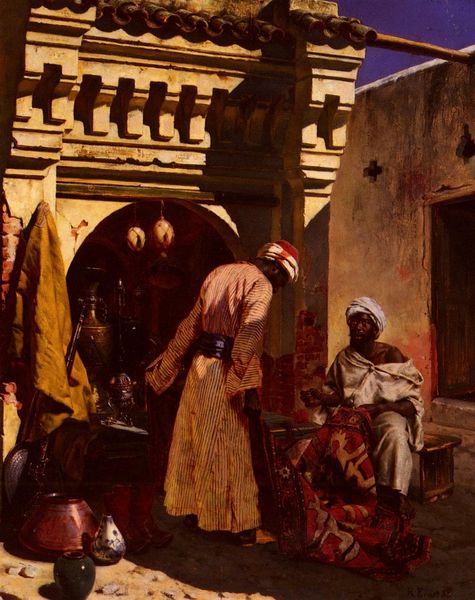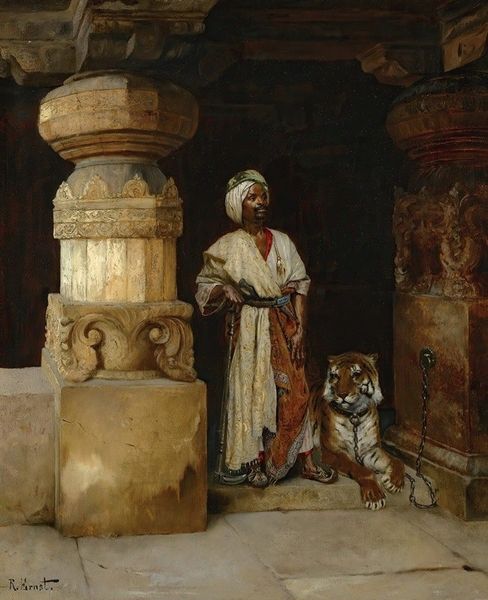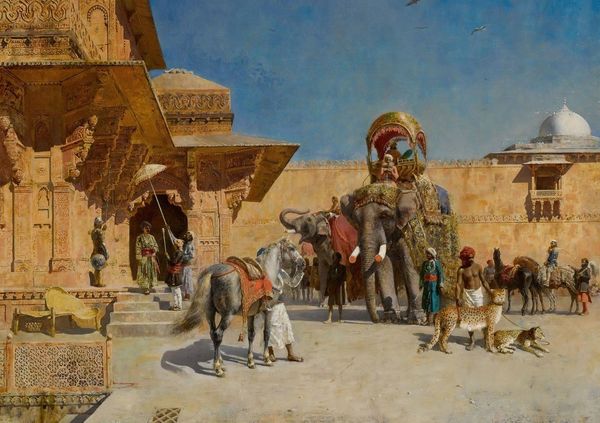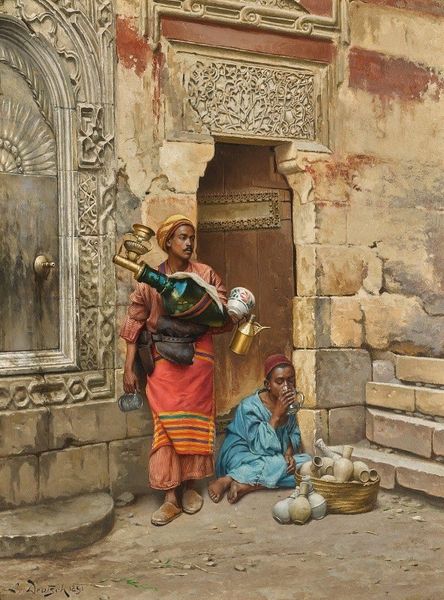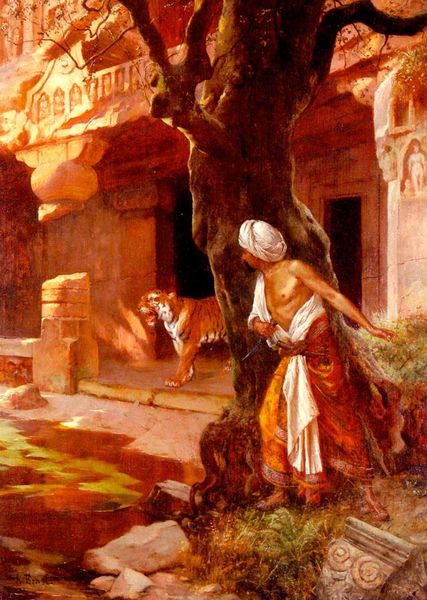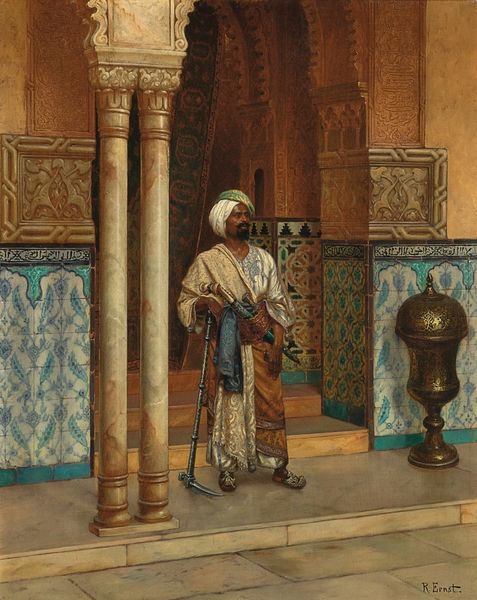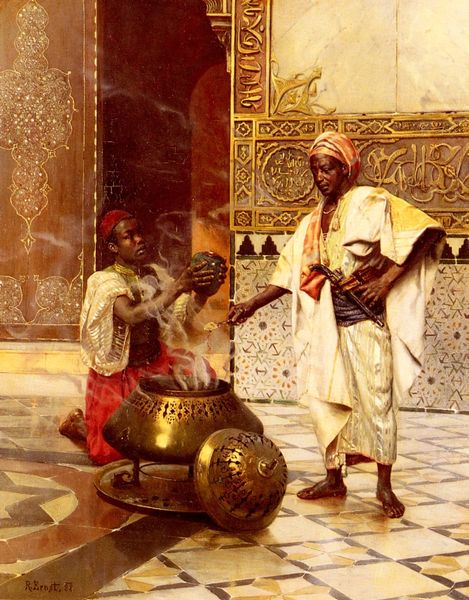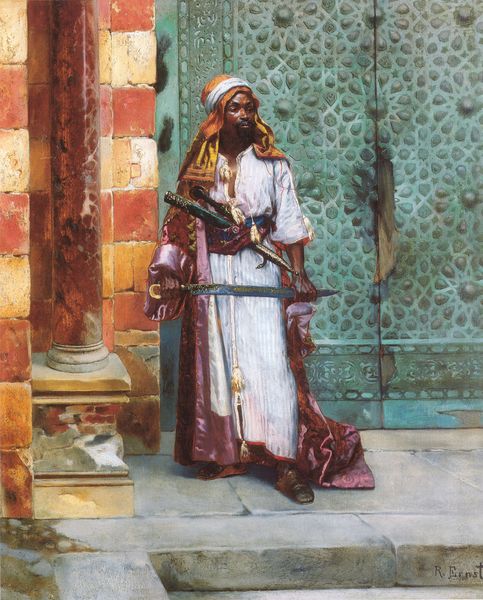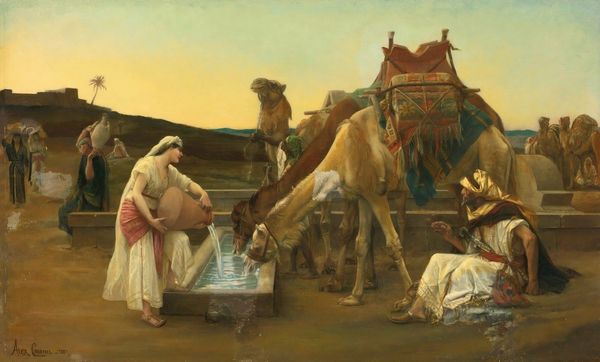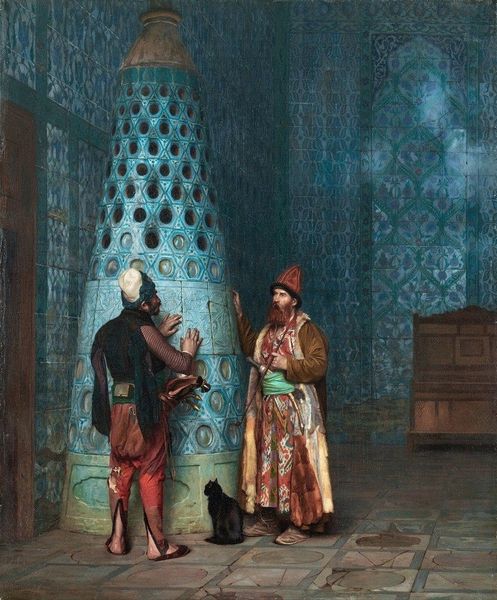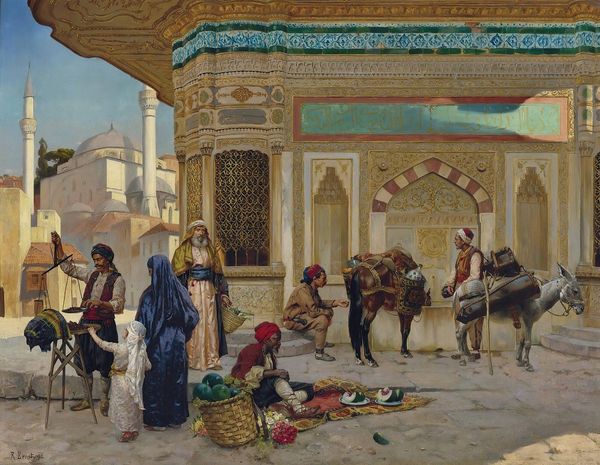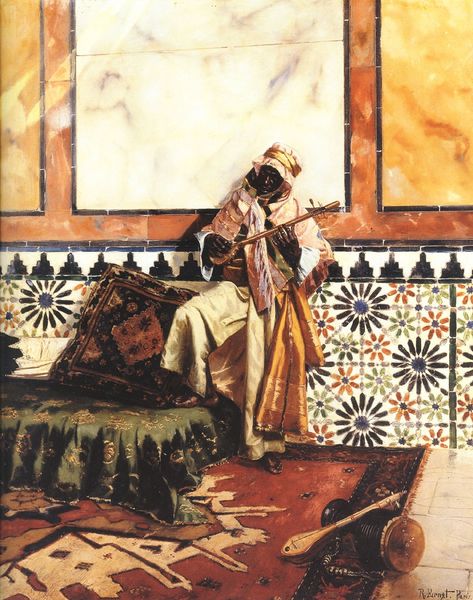
painting, oil-paint
#
portrait
#
painting
#
oil-paint
#
landscape
#
figuration
#
orientalism
#
genre-painting
Copyright: Public domain
Editor: Here we have Rudolf Ernst’s painting, "The Palace Guards," made with oil paint. The scene has such striking, textural elements! The composition makes me feel as if I am intruding on this private space. What do you see when you look at this piece? Curator: Primarily, I observe the intricate interplay between form and color. Notice how the artist constructs a visual dialogue between the cool blues in the foreground and the warmer tones of the architectural setting. Consider, too, how the positioning of each figure – the guard and the tiger – creates a dynamic tension within the frame. How does this internal tension contribute to the overall composition? Editor: Well, it makes me consider how the architecture seems to trap them...are you saying that Ernst has used geometric relations here to explore that tension, in particular, the contrast between the static, imposing columns and the organic forms of the figures? Curator: Precisely! The verticals of the pillars offer a counterpoint to the diagonal line suggested by the tiger’s reclining body. It's a dance of opposing elements, isn't it? Furthermore, examine the brushstrokes; note how Ernst varies their application to differentiate textures, contrasting the smoothness of the polished stone with the roughness of the tiger's fur. Editor: The differing texture is interesting. Are these variations in textures an intentional device? Curator: Undeniably! Texture, in this context, functions not merely as a representational tool, but as an element to further highlight the binary between the organic and geometric. Editor: I hadn't considered that; it provides a sophisticated framework for reading the piece beyond its face value. Curator: Indeed. Such formalist inquiries enrich our aesthetic and intellectual appreciation of the artwork.
Comments
No comments
Be the first to comment and join the conversation on the ultimate creative platform.
